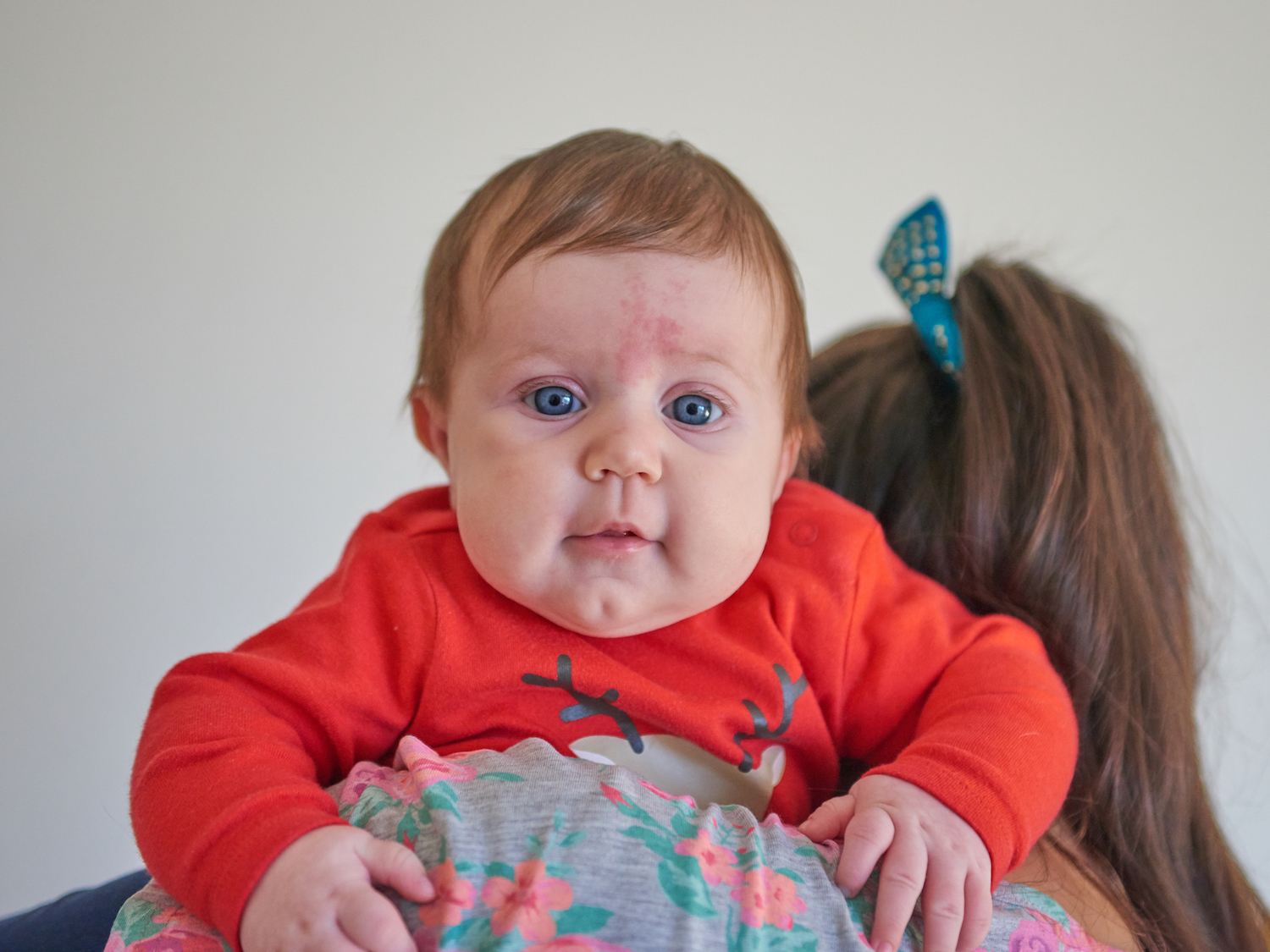
Hemangiomas
Sometimes called “strawberry hemangioma” for their deep-red color, these vascular birthmarks are raised, benign tumors that affect up to 10 percent of children. They grow rapidly in the first 12 months, and then gradually reduce in size over the next three to 10 years, often leaving a slight discoloration or puckering of the skin. If a hemangioma involves tissue near your baby’s airway (on the chin, cheek, or neck, for example), affects her eyesight, stretches the skin, or causes pain, have it evaluated by a specialist, such as a pediatric ENT or a dermatologist, says Gregory Levitin, M.D., director of the Vascular Birthmark Center of New York. Treatment will probably be necessary to shrink or remove it. You can also choose to treat any prominent hemangioma (ideally before age 2 or 3) with steroids, lasers, or surgery.
Café-Au-Lait Spots
As you might guess, these marks, which come in various shapes, sizes, and shades, are the color of coffee with cream, and they occur in about 2 percent of babies. Seen at birth or in the first year, they won’t fade but can be treated with lasers if you’re bothered by them. If your baby has five or more café-au-lait spots, it can be a sign of neurofibromatosis, a genetic disorder that causes tumors to grow on nerve tissue, and may require further testing, says Marilyn Liang, M.D., a pediatric dermatologist at Boston Children’s Hospital.
Port-Wine Stains
Found in about three out of 1,000 kids, these vascular birthmarks indeed look like a splash of vino, and they darken as a child grows. They may start out flat but can gradually thicken and become bumpy. They won’t disappear on their own but can be lightened with laser treatments—and the sooner, the better. Dr. Levitin recommends consulting a specialist in the first three months, since laser therapy can limit the progression of a port-wine birthmark.
Mongolian Spots
These bruise-like patches are seen at birth or soon after in 20 percent of babies and are more common in darker-skinned children. They usually fade within five years, says Dr. Levitin. Mongolian spots are often found on a baby’s back and bottom and can be mistaken for abuse. If your child has any, point them out to your pediatrician and have her make a note of them in your child’s medical records.
Salmon Patches
These flat, pink marks (whose medical name is nevus simplex) are a cluster of dilated capillaries close to the skin that affect 30 to 40 percent of newborns. When they appear at the nape of the neck, they are known as “stork bites,” and when they are around the eyes, they’re called “angel kisses.” They usually disappear by a baby’s second birthday, says Dr. Liang. Otherwise, they can be treated with laser therapy.
